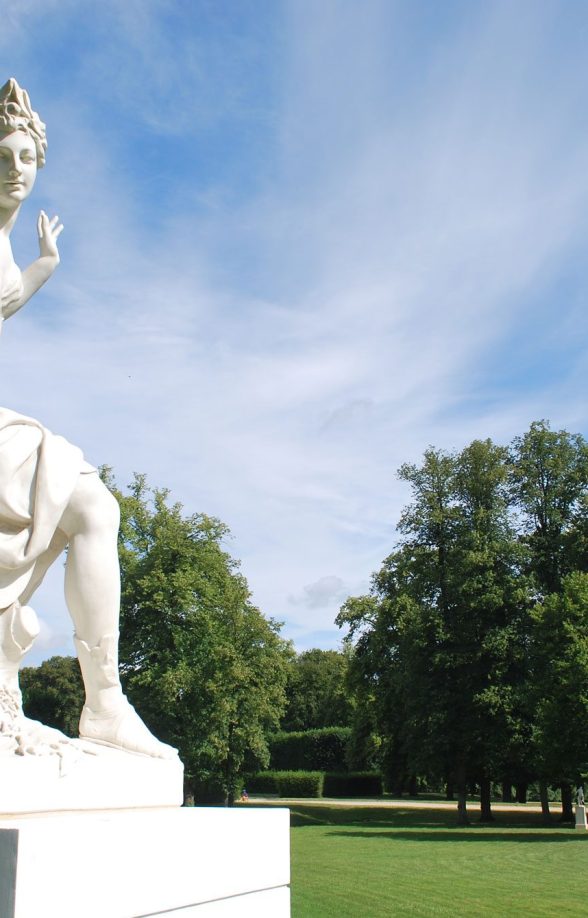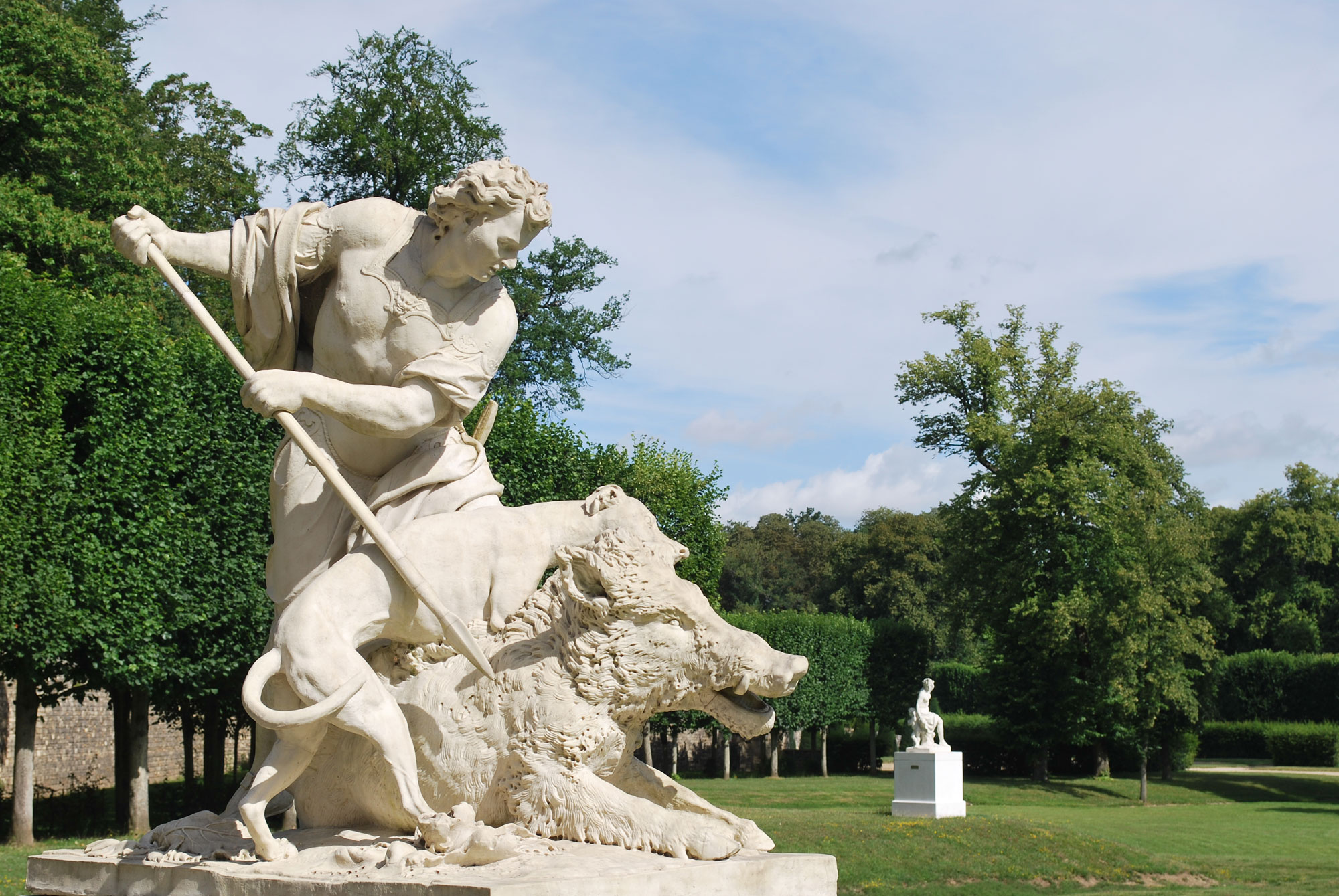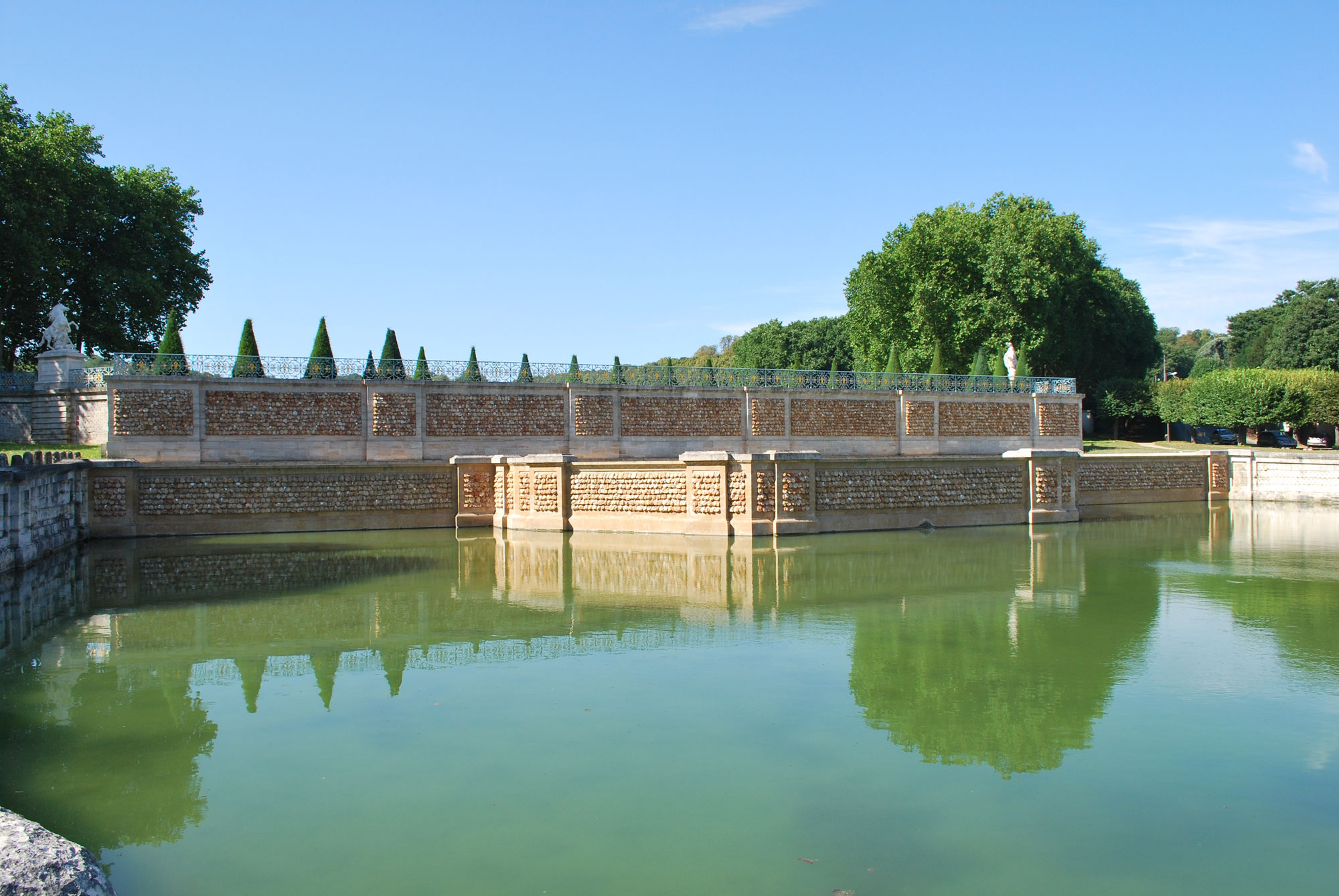'Sire, Marly': such were the words to be pronounced by those who wished to be part of the privileged few permitted by Louis XIV to join him at Marly-le-Roi.
Located in a small, steep-sided valley, the royal residence is visible only once you have entered the estate. It is hidden, near the village of Marly, in the forest. The architect Jules Hardouin-Mansart, who was engaged for the work, created an estate composed of several pavilions spread out along two axes. In the centre, a pavilion housed the King and his family; in front of it, on either side of a reflecting pool, were twelve pavilions to accommodate guests.
Building work took more than five years. Louis XIV first visited the place in November 1683 and stayed there for the first time in 1686.
Rivers, pools and fountains abound at Marly, thanks to the proximity of the Seine and to the famous and colossal 'machine' positioned on the river – a masterpiece of hydraulic engineering of its time, constructed from 1682 and operational for pumping water by 1685. The quantity of water enabled the King to produce waterfalls, which he had been unable to do at Versailles. Such water features included La Rivière (1696–7), a gigantic cascade made from white marble situated to the south of the royal pavilion, and La Cascade champêtre, constructed in the Bosquet du Levant (1701). To the north, a monumental horse-watering pool (1698–9) was built to serve as a symbolic entrance to the lower gardens, where it can still be seen today.
In addition to Jules Hardouin-Mansart and Charles Le Brun, other pre-eminent artists contributed to enchantment of the site. Today, their works can be seen in the Cour Marly at the Louvre.
The extravagance of the water features, buildings and gardens made the estate, according to contemporary visitors, 'the most beautiful place in the world'.
Although the estate itself no longer exists, you can still walk in the park and admire the statuary, or stroll alongside the large reflecting pool.


